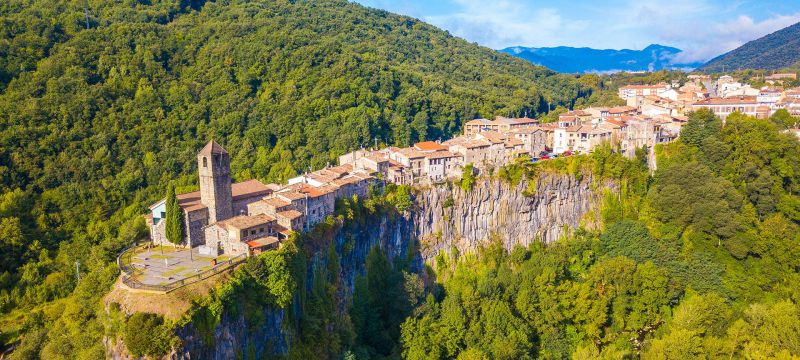Castellfollit de la Roca
Saturday June 22, 2024
The small town of Castellfollit de la Roca stands on a spectacular basaltic cliff 50 meters high and almost a kilometer long, cut by the Fluvià river.
It is about a 10 minute drive from Can Rodeja.
Reconstruction of the cliff formation
Columnar basalts are the result of the superposition of two lava flows and the subsequent erosion of its flanks by the river Fluvia and the Turonell stream.
- 217,000 years ago: the lavas emitted by the volcanoes of Batet follow the valley of the river Fluvia. Its differential cooling gives rise to interior layering.
- Sedimentary materials are deposited on these lava deposits.
- 192,000 years ago: the lava emitted by the volcanoes of Begudà follow the path of the Turonell stream once again covering the lava that had covered the Fluvià. A layer about 30 m thick of basalt is created.
- The lavas block the Fluvià valley and a reservoir is formed.
- The Turonell river digs a new bed.
- The Repàs and Cairat volcanoes emit small lava flows.
- The river Fluvià reopens by eroding down at the point of contact between the lavas and the lands before volcanism.
- The Fluvià and the Turonell erode the base of the cliff, which recedes slowly.
Source: Video from Espai Cràter Museum
https://www.rodeja.cat/sightseeing/espai-crater-olot
